calsfoundation@cals.org
Camp Aldersgate
Camp Aldersgate in Little Rock (Pulaski County) is Arkansas’s only non-profit organization dedicated to serving children with disabilities, youths, and senior citizens in a camp environment. One of a few urban camps in the nation, Camp Aldersgate is situated on 120 wooded acres in the state’s largest city, Little Rock.
Dedicated in the summer of 1947, the camp had as its original purpose to serve as a place for interracial fellowship, meetings, and Christian training. Seeing a need for social change and racial harmony, a group of women of the Little Rock Methodist Council requested a grant of $25,000 from the Women’s Division of the General Board of Global Ministries of the Methodist Church in 1946. The grant was used to buy a 120-acre turkey farm, then four and a half miles west of the city limits, for a place to accomplish this mission. Buildings were converted to meeting rooms and dormitories. The camp took its name from Aldersgate Street in London, England, where John Wesley, the founder of Methodism, experienced his spiritual conversion in 1738.
Among some of the important activities during the early years of the camp were Christian life service retreats, world friendship camp (where young people and church leaders of all races were brought together for the first time), district youth camps, schools of mission, and camping sessions for the youth of black churches. Groups that were already integrated chose Camp Aldersgate as a meeting place, and the camp began to fulfill its primary goal of providing church and community activities across racial lines.
The camp was one of the first integrated facilities in the United States, and resentment against Camp Aldersgate developed because of the camp’s active role in promoting racial integration. Following the 1954 Brown v. Board of Education of Topeka, Kansas Supreme Court decision, the camp became an important location for interracial groups to meet to discuss the ruling and how they might bring about peaceful school integration in Arkansas. During the desegregation of Central High School in 1957, Camp Aldersgate was one of only a few places where leaders, parents, and students of both races could meet to try to resolve the situation. Harassment by individual citizens as well as the state government was common, and the state police kept records of license plate numbers of vehicles traveling in and out of the camp. Attempts were made to destroy the camp’s lake with dynamite, and fires were set in its wooded areas. However, the camp’s programs continued and expanded despite the challenges. Three new concrete cabins, a new conference center, and a dining hall were constructed in 1952.
As the camp grew, programs expanded to meet community needs with social service programs for people of all ages and abilities. Camping programs for mentally challenged children, young adults from the Arkansas State Hospital, patients at the Veterans Administration hospital at Fort Roots, and students from the Arkansas Schools for the Blind and Deaf were offered, as well as literacy programs for women and children in the camp neighborhood. In April 1963, a board of directors was created to guide the camp’s policies. Camp Aldersgate, Inc., was incorporated as a non-profit organization in 1974.
In the 1970s, the camp hosted an environmental education program in cooperation with the local public schools, a residential program for youths with substance-abuse problems, and specialty camps for children with disabilities.
In 1971, Dr. Kelsey Caplinger, a Little Rock physician, organized one of the camp’s most innovative concepts when he established a camp for twelve children whose medical conditions prevented them from attending other camps.
In following years, local health agencies partnered with Camp Aldersgate to provide weeklong camps designed for children with spina bifida, cerebral palsy, arthritis, epilepsy, asthma, diabetes, and other diseases. In 1980, the physicians who supported the camp as advisers and volunteers incorporated as a separate organization Med Camps of Arkansas, Inc. The group continues to be a significant partner in the summer medical camping program, which serves more than 350 Arkansas children.
In 1982, a weekend respite care program for families needing a break from the care of children with developmental disabilities was established with a grant from the Developmental Disabilities Planning Council. This program continues serving families twenty-two weekends a year. The Catholic Social Services of the Diocese of Little Rock (now Catholic Charities of Arkansas) moved its weekly Westside Free Medical Clinic to the camp’s grounds that same year. The Camp Aldersgate Fish Fry, now sponsored by the Pulaski County Rotary Clubs, began in 1983 and continues to be the camp’s largest annual fundraiser.
Programs of the 1990s included the Youth Initiative Project (YIP), which provided young men with safe and constructive after-school activities. The Camp Aldersgate Mission Experience (CAME) provided youth and young adult groups from Arkansas and other states the opportunity to spend a week renovating, painting, and repairing senior citizens’ homes or local churches in the community.
In the early 2000s, Kota Camps were established to allow siblings and friends with and without disabilities to experience camp together. Architecture students from the University of Arkansas (UA) in Fayetteville (Washington County) began spending summers creating an archery pavilion, a twenty-two-foot-high tree house, and an amphitheater. Laura Terry, assistant professor of architecture, directed the students in designing and building these accessible facilities.
The youth volunteer counselor program at Camp Aldersgate is one of the largest youth volunteer training programs in the South. Each summer, more than 100 volunteers age fourteen and above are selected to encourage and assist campers in activities. They typically earn 120 volunteer service hours per week and thirty hours per weekend. Camp Aldersgate relies heavily on other individuals and groups from church and civic clubs to assist with grounds work and building maintenance.
In September 2005, as the result of Hurricane Katrina, Governor Mike Huckabee asked Camp Aldersgate to host evacuees from Louisiana. Sixty-five men called the camp home for three weeks. Board members, staff, and hundreds of volunteers worked to meet the men’s immediate physical, emotional, and spiritual needs, find family members, facilitate reunions, and, for many, find jobs and places to live in the area.
In 2005, the $2.5 million Commons Center was registered as the first gold-certified Leadership in Energy and Environmental Design (LEED) building in Arkansas. As new buildings are added at Camp Aldersgate, their accessibility exceeds the requirements of the Americans with Disabilities Act.
In the fall of 2005, the camp was awarded a $7 million grant from the Donald W. Reynolds Foundation to build eight cabins, an infirmary, and a swimming pool facility.
In 2014, the Reynolds Foundation awarded the camp a $1 million grant to build a 6,000-square-foot activity center. The camp has undertaken fundraising efforts to establish an operating fund for the center. Sonya Schmidt Murphy became the executive director in 2016. Camp Aldersgate celebrated its seventy-five-year anniversary in 2022.
While Camp Aldersgate is affiliated with the United Methodist Church, it continues its dedication to serving people of all backgrounds. Eighty percent of its support comes from individuals, agencies, and corporations.
For additional information:
Britton, Nancy, ed. Camp Aldersgate: A Brief History. Little Rock: Camp Aldersgate, Inc., 1997.
Camp Aldersgate. https://campaldersgate.net/ (accessed January 17, 2023).
Cathy Hall Bacon
Camp Aldersgate, Inc.
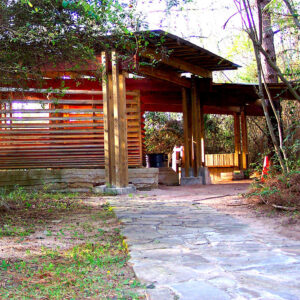 Archery Range
Archery Range 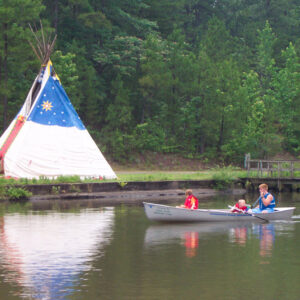 Camp Aldersgate
Camp Aldersgate 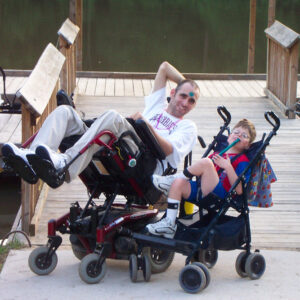 Camp Aldersgate Campers
Camp Aldersgate Campers 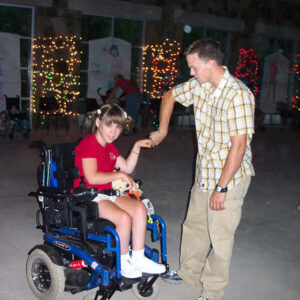 Camp Aldersgate Dance
Camp Aldersgate Dance 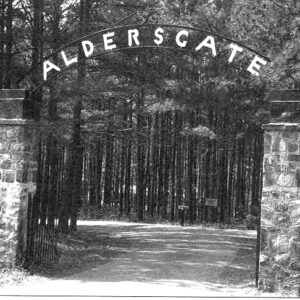 Camp Aldersgate Entrance
Camp Aldersgate Entrance 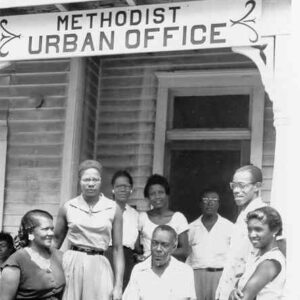 Camp Aldersgate Office
Camp Aldersgate Office  Camp Aldersgate Swimming
Camp Aldersgate Swimming 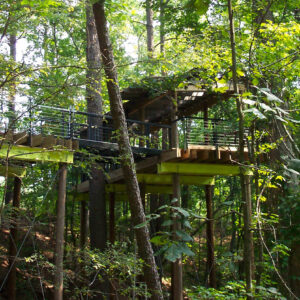 Camp Aldersgate Tree House
Camp Aldersgate Tree House 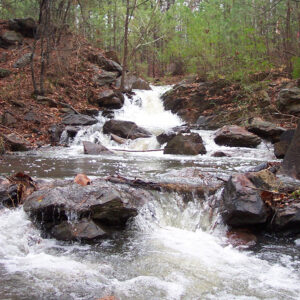 Camp Aldersgate Waterfall
Camp Aldersgate Waterfall 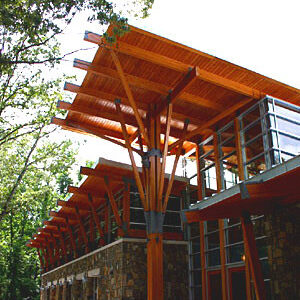 Commons Center
Commons Center 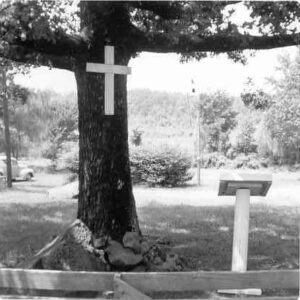 Lectern and Cross
Lectern and Cross 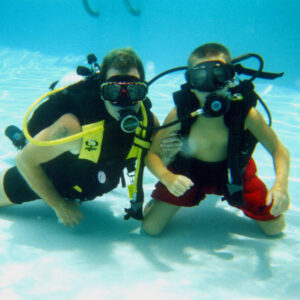 Scuba Lessons
Scuba Lessons 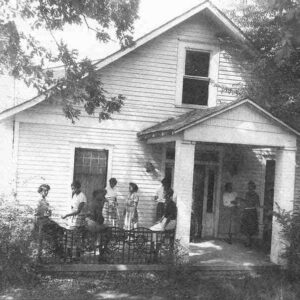 Windy Willow Turkey Farm
Windy Willow Turkey Farm 




Comments
No comments on this entry yet.